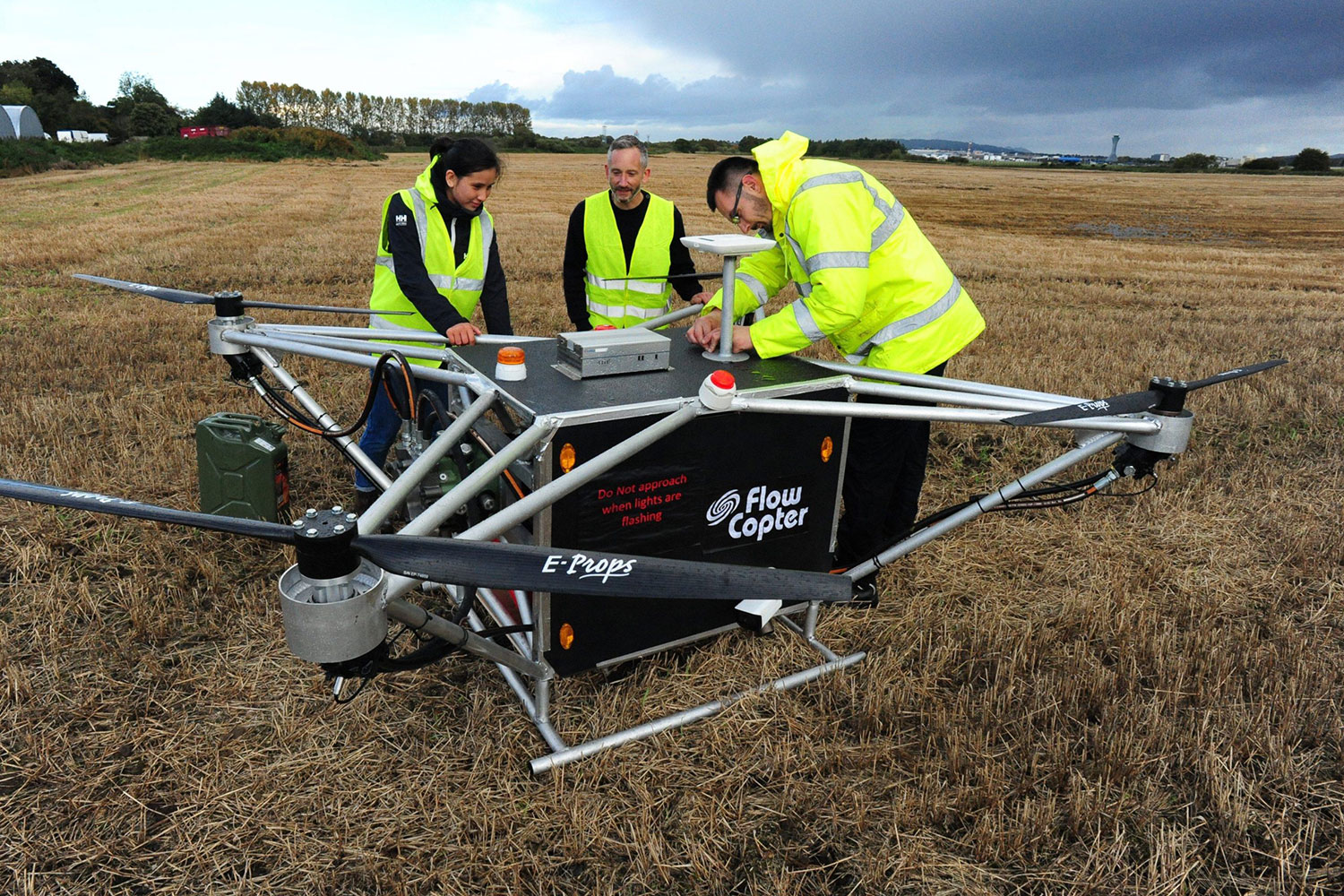
Edinburgh company Flowcopter is trying to bridge a major problem in deploying UAV on extended offshore missions: Smaller craft have neither the heft nor battery life to handle the exacting conditions, while gas-powered engines aren’t well-suited to quick adjustments rotor flight requires. Its solution is a long-distance, heavy-lift drone equipped with hydraulic motors that effectively regulate spin rates.
Battery-driven UAVs have come a very long way over the past decade, and will doubtless continue developing toward being able to transport extremely weighty payloads in even ferocious conditions. But for now, they can’t perform challenging maintenance, inspection, surveying, and search and rescue missions in often inhospitable sea environments – especially far off coast. Awaiting the day they can, Flowcopter has developed a hydraulic motor that will allow heavy-lift drones to take on those kinds of offshore tasks, and remain reliably airborne using shifting rotor speeds.
To be sure, Flowcopter’s solution is poles apart from the lightweight, agile, carbon-free, and tech-packed assets that battery-powered UAVs represent. But the company’s innovation using hydraulic motors to regulate rotor spin has produced a drone it says can fly for up to six hours over distances of 560 miles on a single, quickly refilled tank of gas.
“Flowcopter is developing a heavy lift drone product to help helicopter operators optimize freight, surveying and search & rescue operations,” the company’s site says. “Based on its novel, patented transmission technology, Flowcopter’s product will offer a step change in the capabilities of today’s heavy lift drones in robustness, range and payload.”
Many large UAV have been operating on gas engines for a long time by running off different propulsion technology. But Flowcopter says its invention will permit multi-rotor, vertical takeoff and landing (eVTOL) craft to do so, too.
It says it has solved the problem of gas motors being unable to react to satisfy the frequent and rapidly changing speed spinning rotors need to keep UAVs stable and aloft. To work around that, the company has paired certified combustion engines with Digital Displacement pumps, which feed into the drone’s hydraulic motors that adjust propeller rotation as needed.
The engineering and mechanics of that are even more complex to describe, but the system basically rigs larger drone gas engines to a smaller eVTOL UAV. The added pumps translate that brute power into flexible, rapidly responding digital regulation of hydraulic motors spinning the propellers.
“We take the proven benefits Digital Displacement® transmission offers; significantly lighter, more robust, and lower cost than an equivalent pure electric transmission,” the company says. “We combine this with a light aircraft type certified engine. Our solution is a platform that offers significantly more capability than any large drone on the market today, or in the near future.”
Flowcopter says it came up with the idea from the UK Royal National Lifeboat Institution’s call to developers to design drones capable of accompanying boats on search and rescue missions. It has gone further than that, creating a craft that can fly over 550 miles, or shorter distances carrying payloads of up to 330 pounds.
The following video shows a somewhat rough-hewn prototype undergoing a tethered stability test. The result may not match the sleek, slick, and diversified performances in a DJI or Skydio product film, but the Flowcopter footage does have the distinction of featuring the world’s first hybrid hydraulic motor drone.
FTC: We use income earning auto affiliate links. More.



Comments